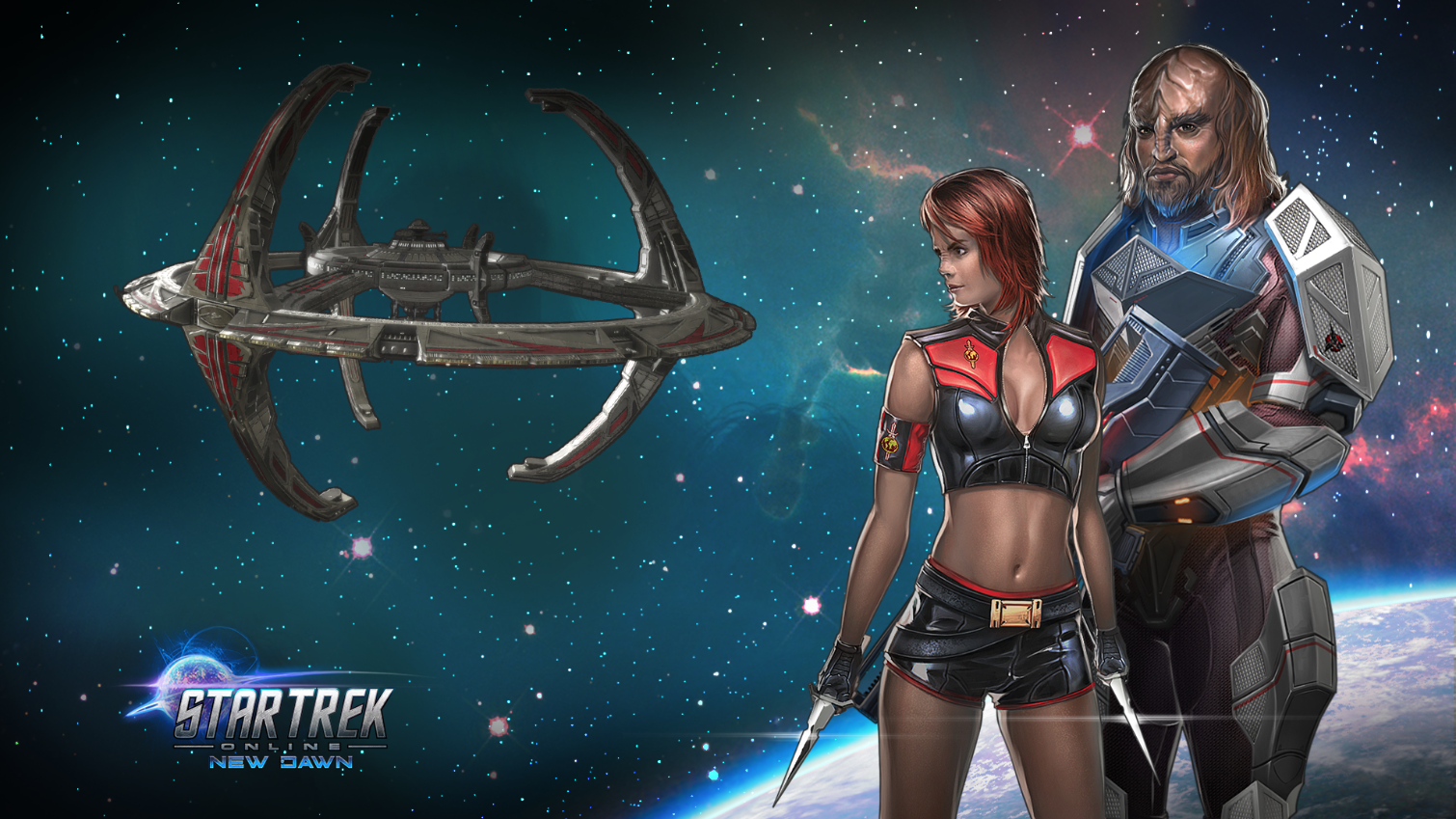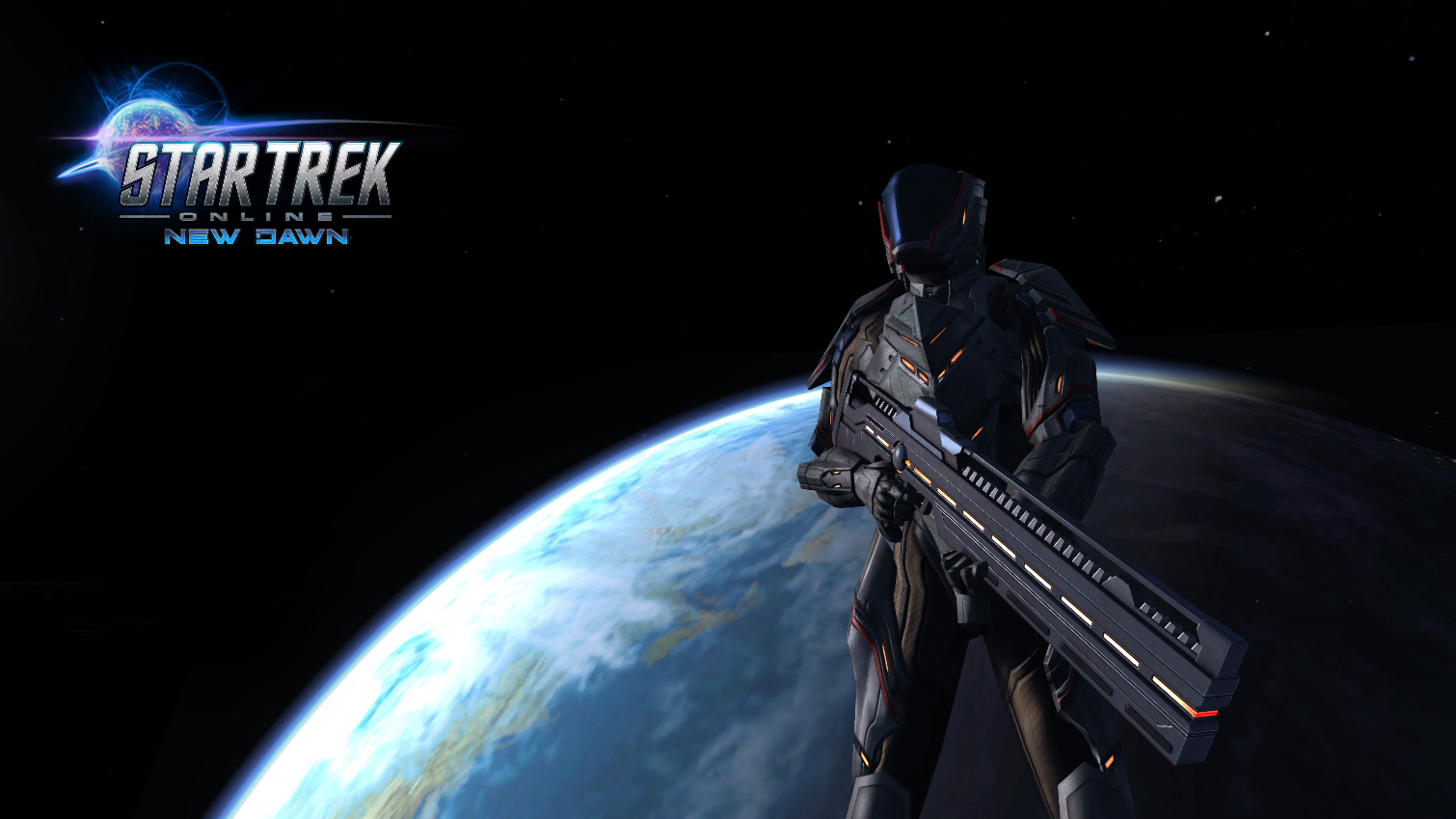Tom's Guide Verdict
Star Trek Online, while somewhat repetitive and a bit violent, still offers players an interesting, faithful Trek story.
Pros
- +
Long, interesting, faithful Star Trek Story
- +
Satisfying ship and character customization
- +
Fantastic pacing
Cons
- -
Run-of-the-mill gameplay
- -
Limited MMO mechanics
- -
More reliant on combat than shows or movies
Why you can trust Tom's Guide
More than a decade ago, World of Warcraft set up a very specific set of expectations for a massively multiplayer role-playing game. Even now, it's not easy to break the mold of kill X monsters, collect Y trinkets and travel to Z town to repeat the process. That's why it's so refreshing when a game like Star Trek Online rethinks the MMO structure.
Although it's somewhat repetitive and a bit violent given the source material, Star Trek Online, first released for PCs in 2010, offers players a legitimately interesting, well-paced story that feels faithful to the Trek lore.
MORE: Top 10 Star Trek Games
Star Trek Online isn't exactly a great game in general, but it's a great game for Star Trek fans, and that's a triumph in its own right. Now that the game has finally been ported to the Xbox One and PS4, it's time to revisit both the core experience and see how it feels with a controller in hand.
Gameplay: A Deadly Game
Star Trek Online gets the fundamentals correct right out of the gate. When the game begins, you watch a video and hear the late Leonard Nimoy explain what's happened in the 20 years between the events of Star Trek: Nemesis (the last film in the original chronology) and the beginning of the game. From there, you create a character who's a captain in the Federation, Klingon or Romulan factions.
Classic Star Trek races such as human, Vulcan, Gorn, Cardassian and Trill are present and accounted for, but you can also create an alien race with a unique mix of gameplay traits and physical characteristics if you prefer. Your choice of playing as a Science, Engineering or Tactical class feels a bit more limited, but you have a fair amount of leeway over customizing your character as you progress and level up later on.

I settled on a short, male human with a beard and an aptitude for combat (not much of a stretch). The tutorials do a great job bringing you up to speed, and there's quite a lot to know.
Get instant access to breaking news, the hottest reviews, great deals and helpful tips.
Before the first set of missions is out, you'll have learned how to move, interact with nonplayer characters, equip items, shoot at enemies, use special skills, assemble an away team, pilot a starship, hail other vessels, allocate shields, prioritize different ship systems, issue orders to your crew and collect the spoils of war, among other things.
Exploring Strange, New Worlds
While the tutorial is only a few missions long, the helpful pop-up screens will follow you through the first 20 missions. You still have to learn how to recruit new bridge officers, level up your ground skills, improve your ship, customize your outfit, change your ship's appearance, increase in rank and, before too long, get a new ship.
I won't say the constant flow of information is overwhelming; the game usually tells you what you need to know, when you need to know it, and no sooner. But there's a lot to remember, and I have to wonder whether some of it could have been streamlined.
One of the big advantages of having the game on consoles, for example, is the ability to program skills to autofire, since there aren't enough buttons on a console to have them all accessible at once. The game doesn't tell you how to do this until you're more than a dozen missions in, nor does it mention that the skills you map to the face buttons can't autofire at all.
Some key processes, such as procuring new ships and assigning secondary combat skills (like throwing grenades, for my tactically minded officer) require a lot of trial and error. They're surprisingly simple once you figure them out, though.
This lack of transparency also affects the game's micro transactions, for better or worse. As a free-to-play game, Star Trek Online offers a premium currency known as Zen in order to get fancy outfits and ship skins.
To the game's credit, Star Trek Online doesn't lock free players out of any important content; they can still experience the entire story with full access to whatever equipment they find. They can still access plenty of cool costumes and starship skins, but Zen does give access to some cool extras, like show-specific outfits.
The game never really explains what Zen does or why you would want it, though — ditto with alternate in-game currencies, such as refined dilithium and gold-pressed latinum.
Star Wars
As far as gameplay itself goes, Star Trek Online is actually pretty simple once you get past the myriad systems. You'll spend about half your time in space, plotting courses and engaging other ships in battle, and half the time on the ground, exploring somewhat repetitive levels and trading phaser fire with enemy soldiers.
Both ground and space combat are competent. I wish I had more to say about them, but they basically just work.
During spacefaring encounters, you'll have to keep an eye on your shields and your positioning, using special skills to boost your attack and defense while maneuvering your ship through enemy fire. Ground combat is similarly straightforward: Keep an eye on your shields and health while shooting enemies and coordinating your party members.
Either way, the game throws a lot of enemies your way. Upgrading your equipment and dispatching adversaries faster feels satisfying, but there's not a ton of depth until you get to late-game multiplayer content.
Speaking of multiplayer, Star Trek Online is a very solo experience, for better or worse. You can join a Fleet of like-minded players, but the main story missions cast you as the protagonist in an ongoing story. So there's no real reason to team up for those outings. Seeing other players in hubs and just out and about on the galactic map helps the galaxy feel like a big, connected place. But in terms of massively multiplayer content, Star Trek Online can very much take it or leave it.
Story: The Undiscovered Country
The upcoming Star Trek: Discovery TV series may wind the clock back to just before the era of Capt. Kirk and Mr. Spock, but Star Trek Online is very much for fans who want to know what happened after Spock Prime traveled back in time in the 2009 reboot film.
(That movie, along with its sequels, Star Trek Into Darkness and Star Trek Beyond, takes place in a different time line than the TV shows and the older movies. Star Trek Online returns to where the original time line left off.)
Twenty years after the destruction of the planet Romulus (which spurred the creation of the reboot time line), and without Ambassador Spock to keep the peace, the galaxy has deteriorated rapidly into political intrigue and infighting. The Federation and the Klingon Empire, formerly allies, are at war; the Romulans are still trying to gather and heal their shattered people; the Dominion are rebuilding; the Borg are ready to invade.
To the game's credit, this isn't just a setup for eternal warfare; it's the beginning of a complex, twisting story line that changes radically as it advances.
My favorite part of Star Trek Online, though, is the mission structure. This is not a game in which you'll rack up a bunch of missions in a hub, then turn them all in at the same time. Each mission is long and involved, taking somewhere between 20 and 45 minutes, and each feels very much like an episode of the show.
The missions are also organized into seasons with distinct story lines. If you were hoping the next Star Trek TV series would cover a post-Voyager time line, you don't need to wait; this is pretty much it.
This story-rich approach has only two notable drawbacks. The first is that I'm not sure it has much appeal for people who are not already heavily invested in the Star Trek story line. While World of Warcraft, for example, is perfectly accessible even if you haven't played the three earlier Warcraft games, Star Trek Online doesn't do much to ease new fans into the world.
The story is somewhat more directed toward combat than most Star Trek episodes were, but the game takes the lore very seriously. If you aren't familiar with the sanctuary at P'jem, Miral Paris' parents or General Martok's lineage, you can still follow along and enjoy the story. But the game assumes you know what's happened in the Star Trek universe, from Enterprise through Voyager, and that you are as eager as the writers to learn what happened next to your favorite characters.You don't need an encyclopedic knowledge of Trek lore by any stretch, but if you don't know the basics of the interplay among the Federation, Klingons and Romulans around the time of Nemesis, the story will make very little sense.
The other pitfall is that the missions can get repetitive after a while. You travel to a new system, fight off a group of enemy ships, beam down to a base, incapacitate the ground troops, beam back up, fight a few more ships and hightail it out. There's some variation in the order of things, and there's an occasional puzzle or noncombat mission to shake things up, but it's an awful lot of fighting for a series that, for half a century, has prided itself on finding nonviolent solutions.
Graphics and Sound
The music in Star Trek Online is beyond reproach. There's a whole soundtrack's worth of orchestral tunes that channel existing Star Trek music without copying it outright. Both subtle tunes for exploration and more intense ones for battle sound perfectly in place for their settings. The sound effects are similarly accurate.
On the other hand, the voice acting is a mixed bag. Since a lot of mission dialogue is expository (and long), characters have a bad habit of droning on and on about technobabble and plot minutiae. I didn't encounter any bad performances during my time with the game, but everyone sounds, for lack of a better term, very video game-y.
MORE: 12 Star Trek Episodes to Celebrate the 50th Anniversary
The graphics for ground missions look like something you'd get in an early PS3 game, with uninspired character models and bland textures. Space exploration looks pretty good, though, especially the huge variety of customizable ships.
My first vessel, the USS Daybreak, looked radically different from my second, the USS Edinburgh. Space is also just colorful enough to be pretty without straining credulity.
Bottom Line
As a Star Trek fan, I adored my initial foray into Star Trek Online and can't wait to get back to it. While the console port doesn't give exactly the same level of control as the PC version, the user-friendliness is through the roof. Kicking back on the couch is also the ideal way to experience the episodic, story-driven missions.
On the other hand, the title is fairly niche, as MMOs go. You need a pretty good working knowledge of Star Trek just to complete the first story arc, and the gameplay is not nearly inspired enough to carry the game on its own. Furthermore, the story — while good — is more about intrigue and interplay than about thoughtful morality parables.
For a nonfan, it may be hard to understand Star Trek Online's appeal. Taken as a whole, though, the game gets a lot more right than it gets wrong, and there are a whole lot of fans who will absolutely adore what this title has to offer.
- Star Trek: Discovery Panel Reveals New Show's Secrets
- How to Binge Watch 726 Star Trek Episodes (and 12 Movies)
- Star Trek: The Wrath of Khan Wreaks Bloody 4K Vengeance

Marshall Honorof was a senior editor for Tom's Guide, overseeing the site's coverage of gaming hardware and software. He comes from a science writing background, having studied paleomammalogy, biological anthropology, and the history of science and technology. After hours, you can find him practicing taekwondo or doing deep dives on classic sci-fi.

